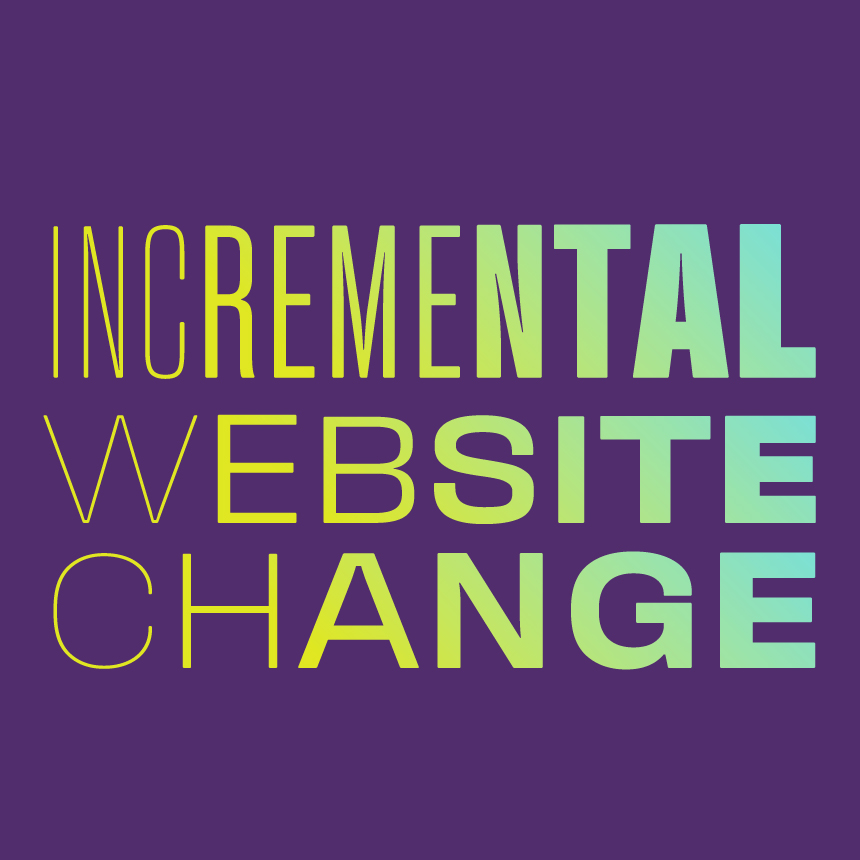Unlocking the case for (incremental) website change
Key takeaways
- Consider incremental change: Focus on continual website improvements rather than a full-scale rebuild for ensuring sustained progress
- Conduct a deep dive audit: Use a Digital Diagnostic and SEO Audit to identify and prioritise developments and fixes, enhancing website performance and user experience.
- Establish content governance: Implement a content strategy and governance framework to ensure content creation, review and publication maintain high standards.
“We need a new website” – words often associated with a considerable amount of investment, time, resources, stakeholder commitment and a whole load of considerations – it’s no wonder it’s something that only gets considered every five, six (or even more) years.
When your last new website went live, there were probably high-fives and collective sighs of relief. High-fives because you’re proud of what you’ve achieved and perhaps, you’re at the front of your competitor pack. Sighs of relief because you know you won’t need to do that again for a while. However, with the pace of change accelerating along with the changing demands of your clients, it won’t be long before you’re no longer at the front and in fact, if you stand still, it won’t be long before you find yourself going backwards.
All change
The good news is that change doesn’t (and shouldn’t) always mean a giant leap. While step change can mean rapid transformation and significant gains, it can also involve considerable shifts in thinking, changing business models or ways of working – and that can mean progress is blocked by other decisions. Taking a more incremental approach to change, with a focus on continual and sustainable improvement, can make securing budget and managing resources far easier. It also means prioritising what you do and where you can have the biggest impact.
It’s the same when it comes to your website. At Living, we refer to it as “changing the wheels on a moving bus.” It’s a smart approach to take when a full-scale rebuild is out of reach or you need to factor in phased changes as the firm or business landscape changes. If you’re happy with your CMS (and you’re on the latest version) then there are phased developments that you can make to breathe life back into your brand and your website.
The case for change
A Digital Diagnostic or an SEO Audit is like giving your site a health check-up to identify areas where it can perform better. A Digital Diagnostic will deep dive into every aspect of your site’s functionality and content and give you a roadmap of what to tackle first. An SEO Audit will help you identify where you need to review content or fix problems such as broken links, slow loading times, or outdated content that could be driving visitors away.
You don’t need to wait for an entire brand or website project to be scoped, budgeted and approved by the CFO before you start a discovery exercise. Use it to listen to your stakeholders, win hearts and minds, identify areas for improvement, build the case for change and prioritise the short-, medium- and long-term goals.
Where to begin?
If you do nothing else – agreeing and setting out your firm’s proposition will be one of the most beneficial things you can do. It sets out the ‘what,’ ‘why’ and ‘for whom’ across everything that you do for website and brand. Most importantly – when you’ve done that, make sure it’s prominent and easily viewable on the site by being up front and centre on your home page.
Section by section
Identify the sections of your website that need the most work. Start with quicker fixes, such as improving your homepage's structure, content hierarchy and design for better performance. For longer-term gains, consider how your brand can be more visible and consistently applied by developing new content components or page templates where necessary.
There may be sections to add – Living Ratings show that only 35% of law firms provide case studies on their website, and this is the crucial evidence and story telling that makes your proposition real.
Taking control
A content audit will help identify old, poorly performing content or content gaps. But without a governance framework maintaining high-quality standards will remain a challenge. By establishing clear guidelines for content creation, review, and publication – it ensures that the most important content is getting prioritised.
Want to know more?
If you'd like to understand how a Digital Diagnostic can lead your incremental roadmap for change and ensure your website remains a powerful tool for client engagement, business development and maintaining a competitive edge, please contact Duncan Shaw in New York, Greg Hobden in London or Gigi Yung in Hong Kong.

Latest views
Our latest insights, directly to your inbox







